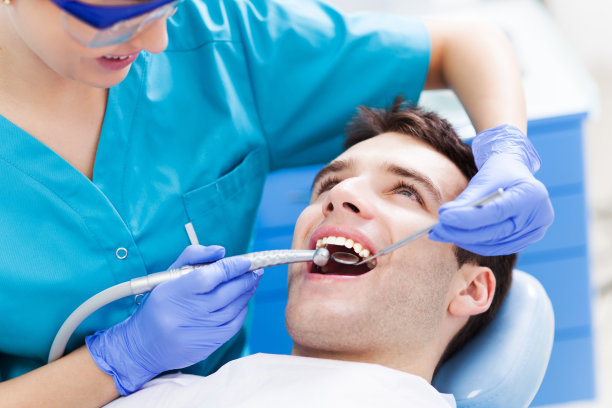Essential Guidelines to Follow After Receiving a Dental Filling for Optimal Oral Health and Recovery
Summary: Receiving a dental filling is a common dental procedure aimed at restoring a tooth damaged by decay. However, proper aftercare is crucial for optimal oral health and recovery. This article outlines essential guidelines to follow after receiving a dental filling. Firstly, it addresses post-treatment care, including sensitivity and pain management. Secondly, it emphasizes dietary restrictions to promote healing. Thirdly, the article highlights the importance of maintaining oral hygiene to prevent future issues. Lastly, it discusses scheduling follow-up appointments to ensure the fillings longevity. By adhering to these guidelines, patients can significantly enhance their oral recovery process and overall dental health.
1. Post-Treatment Care Instructions

After receiving a dental filling, it is essential to understand the immediate care required to ensure a smooth recovery. The numbing agents used during the procedure can last for several hours, which may lead to unintended biting of the inner cheek or tongue. To avoid this, patients should be cautious until the numbness fully subsides. Gentle and careful biting should become a conscious effort during the first day post-treatment.
Moreover, its normal to experience some sensitivity around the filled area. If an over-the-counter pain reliever doesnt alleviate discomfort, be sure to contact your dentist for advice. They can provide specific recommendations for pain management, ensuring that any potential issues can be addressed early on.
Lastly, patients may notice slight swelling around the filling site, which should pass within a few days. Using a cold compress on the outside of the face can help reduce this swelling, and resting for a short period after the procedure can lead to a more comfortable recovery.
2. Dietary Restrictions for Healing
What you eat after a dental filling plays a vital role in the healing process. Dental professionals recommend avoiding hard, crunchy, or sticky foods immediately following the filling. These types of foods can place unnecessary pressure on the newly filled tooth, potentially causing discomfort or even dislodging the filling.
During the first 24 hours post-procedure, a diet of soft foods is advisable. Foods such as yogurt, mashed potatoes, and smoothies are gentle on teeth and wont aggravate sensitive areas. Staying hydrated is also important; soft drinks can be consumed, but excessive sugar can harm tooth health.
After a couple of days, once the initial sensitivity has decreased, normal eating habits can generally be resumed. However, avoiding excessively hot or cold foods for the first week can help minimize discomfort and protect the integrity of the filling.
3. Importance of Oral Hygiene Maintenance
Maintaining excellent oral hygiene after receiving a dental filling is crucial in ensuring the filling lasts and preventing further issues. Gentle brushing around the filling area is essential, but patients should refrain from vigorous brushing during the initial days post-treatment. Its advisable to use a soft-bristle toothbrush to avoid irritating the sensitive area.
Flossing should also be part of daily oral care, but with caution. Ensuring that food particles are removed without applying too much pressure on the filling is important. Patients should gently guide the floss around the filled tooth to avoid damaging the material or disturbing the bond between the filling and tooth.
Additionally, using an antiseptic mouthwash can be beneficial. This promotes healing while also fighting bacteria, helping to keep the surrounding area clean and free from infection. However, its wise to wait a full 24 hours after receiving a filling before using mouthwash to allow for initial healing.
4. Scheduling Necessary Follow-Up Appointments
Follow-up appointments after a dental filling are vital to monitor the health of the filled tooth and to address any post-treatment concerns. The dentist will evaluate the fillings placement to ensure it fits properly with your bite and that there are no signs of complications. A comprehensive check-up will usually be scheduled within a few weeks of the filling.
Patients should also be proactive in reaching out to their dentist if they experience persistent pain or discomfort. Early intervention can prevent more significant issues, ensuring that the filling remains intact and effective.
Furthermore, regular dental check-ups should not be neglected. Consistent professional dental visits are key to maintaining overall oral health and are crucial for detecting any issues with existing dental work, including fillings.
Summary: Following a dental filling procedure, adhering to post-treatment care, dietary guidelines, maintaining oral hygiene, and scheduling follow-ups are critical steps for recovery. These practices ensure the longevity of the filling while promoting optimal oral health. Patients should remain vigilant and proactive about their dental care, leading to a healthier smile.
This article is compiled by Vickong Dental and the content is for reference only.



